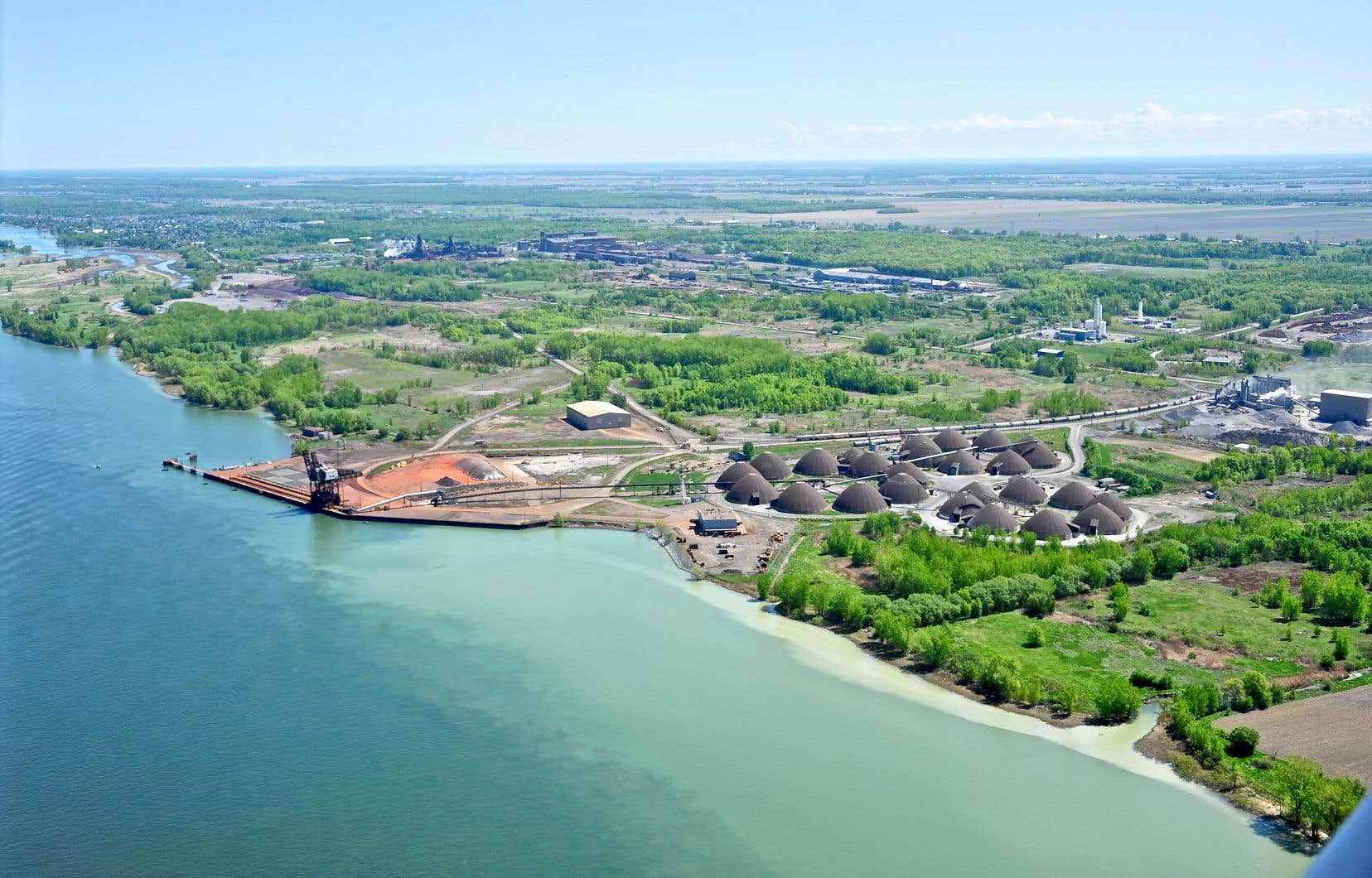Nearly two years after receiving the green light from the Trudeau government, the Contrecoeur industrial container port project has still not obtained authorization to destroy critical habitat for the copper redhorse, a fish that only exists in Quebec and which is endangered. This authorization is essential for the realization of the project, but the opponents affirm that it would contravene the federal legislation which protects the endangered species.
The federal government gave its approval to the $750 million project of the Montreal Port Authority (MPA) at the beginning of March 2021. The objective is to build a new port on the south shore of the St. where 1.15 million containers and up to 1,200 trucks pass through every year. It would be the largest port project in recent decades in Quebec.
Since the capacity of the Port of Montreal’s facilities on the island is 2.1 million containers annually, the Contrecoeur project would increase the total in the region to 3.25 million containers each year, an increase of 55 %. The project also includes the development of a seven-track railway yard.
Proof of political support in Ottawa and Quebec, the two levels of government have already offered $300 million and $55 million respectively in support to the promoter, even before the latter has received all the necessary authorizations. The federal government had also announced its offer of public funds before the filing of an impact study deemed complete.
The construction of this port involves the dredging of at least 750,000 cubic meters of sediment from the river, over an area estimated at 150,000 square meters (about 20 soccer fields). The project will also result in the destruction of portions of critical habitat for the copper redhorse, which has been duly protected since 2021 under Canada’s Species at Risk Act (SARA).
In this context, the proponent must obtain a “permit” allowing him to destroy elements of the critical habitat to build his wharf of 675 meters in length. The legislation provides that authorization can be granted if the permit is requested for “scientific research”, an “activity which benefits the species” or if the project “affects the species only incidentally”. Moreover, authorization can only be granted if “all possible measures are taken to minimize the negative consequences of the activity for the species, its critical habitat or the residences of its individuals”.
” Science “
Despite several months of procedures, the MPA has still not obtained this permit, confirmed to the To have to Fisheries and Oceans Canada (DFO). “To date, DFO has not received all the information necessary to make a decision. Consequently, there is no specific deadline at this time to render a decision.
In the office of the federal Minister of the Environment, Steven Guilbeault, we rely on the analysis in progress. “The file is currently under review at DFO. Government of Canada decisions are always based on science. We cannot comment until all the information is available,” it was argued in a written response.
The Legault government, which opposed the protection of the critical habitat of the copper redhorse in 2021, believes that the federal environmental assessment took into account the situation of wildlife species. “Commitments have been made by the initiator of the project to minimize the impacts of the project on these wildlife species,” said the office of the Minister of the Environment, Benoit Charette, by email. Regarding the copper redhorse, the ministry “is still awaiting the federal compensation plan and intends to provide the necessary follow-up”. Specific requests in connection with compensation for fish feeding areas have been made, according to information obtained by The duty.
The Montreal Port Authority wants to be reassuring about the possibility of setting up an industrial port within the limits of critical habitat, without harming the species. In particular, it plans to carry out “a project to restore two hectares of seagrass beds serving as habitat for the copper redhorse, i.e. double the portion of seagrass beds that will be affected”.
The proponent also says that he has mandated the Union des producteurs producteurs to implement a five-year program “to improve water quality” in the watershed of the Richelieu River, where there are the only two spawning grounds. known to the copper redhorse. “We all have the same goal: measures that work,” summarizes the APM. The promoter hopes that its project will be completed by the end of 2026.
If the federal government grants the permit requested under the SARA, however, it risks having to face legal action, warns the Society for Nature and Parks of Quebec. “Given the best scientific knowledge currently available, both on the situation of the copper redhorse and on the value of the proposed compensation measures, we do not see how the federal government could issue a permit authorizing the destruction of part of the habitat of the species while respecting the Species at Risk Act”, sums up its director general, Alain Branchaud.
In a “scientific opinion” produced by four biologists, including Mr. Branchaud, it is also pointed out that the dredging planned for the Contrecoeur project could have impacts on grass beds located downstream and which are important for the copper redhorse. Not to mention the impacts of the expected increase in maritime traffic, which could reach 156 container ships each year.
